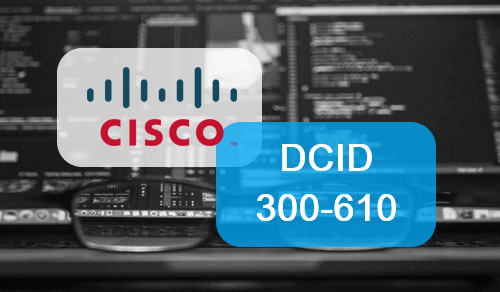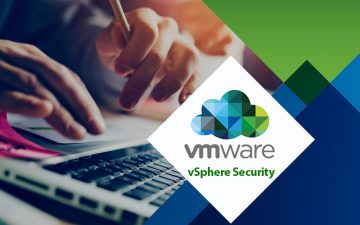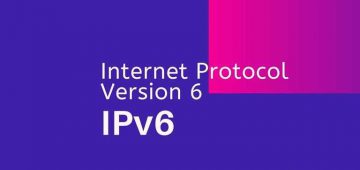دوره طراحی زیرساخت مراکز داده سیسکو، Designing Cisco Data Center Infrastructure (DCID) v7.0 ،دانش کامل با هدف تسلط بر مهارت های طراحی و استقرار راهکارهای مراکز داده و فناوری های سیسکو در زمینه شبکه ، سرور ، مجازی سازی ، شبکه های ذخیره سازی SAN ، اتوماسیون و امنیت ، روشهای طراحی راهکار Cisco Unified Computing System ™ (Cisco UCS®) سرورهای سری UCS B-Series و UCS C-Series ، پلتفرم مدیریتی Cisco UCS Manager و Unified Fabric Cisco ، تجربه طراحی با تکنولوژی های مدیریتی شبکه شامل Cisco UCS Manager ، Cisco Data Center Network Manager (DCNM) و Cisco UCS Director را در قالب دروس تئوری ، مطالعات موردی مبتنی بر طراحی همراه با فعالیت های عملی به مخاطبان ارائه می نماید.
آنچه خواهید آموخت
- توصیف پروتکل ها و شیوه های انتقال ترافیک در لایه های 2 و 3 شبکه در مراکز داده
- توصیف شیوه های طراحی رک (Rack)، الگوهای ترافیک انتقال داده و سوییچ های لایه های access، aggregation و core مراکز داده
- توصیف فناوری Cisco Overlay Transport (OTV) جهت برقراری ارتباط بین مراکز داده مختلف
- توصیف پروتکل مسیریابی Locator/ID separation protocol سیسکو
- طراحی راهکارهای انتقال ترافیک از طریق پروتکل LAN Virtual Extensible (VXLAN)
- توصیف راهکارهای افزونگی سخت افزاری، مجازی سازی شبکه ها، سرورها ،عملکردهای ذخیره سازی و شبکه های مجازی در مراکز داده
- توصیف راهکارهای fabric extenders و مقایسه Cisco Adapter Fabric Extender (FEX) با قابلیت Single root input/output virtualization (SR-IOV)
- توصیف تهدیدات و راهکارهای امنیتی مراکز داده
- توصیف فناوری های پیشرفته امنیتی مراکز داده و به روش ها (best practices)
- توصیف مدیریت و هماهنگ سازی (management and orchestration) تجهیزات مراکز داده
- توصیف انواع سسیتم های ذخیره سازی و سطوح مختلف Redundant Array of Disks Independent (RAID) دیسک ها در سرورها با قابلیت دسترس پذیری بالا و عملکرد بهینه
- توصیف مفاهیم کانال فیبر ، توپولوژی ها و معماری مراکز داده
- توصیف پروتکل کانال فیبر بر روی اترنت (FCoE)
- توصیف موارد امنیتی شبکه های ذخیره سازی (SAN)
- توصیف گزینه های مدیریتی و اتوماسیون زیرساخت های شبکه های ذخیره سازی (SAN)
- توصیف سرورهای UCS سیسکو و مورد کاربردهای پلتفرم های مختلف UCS
- توصیف شیوه های ارتباطی اتصالاتfabric بین واسط های جنوبی و شمالی (southbound and northbound connections)
- توصیف راهکار سیستم های یکپارچه فوق همگرا (hyperconverged)
- توصیف پارامترهای سیستمی مربوط به راه اندازی دامنه Cisco UCS
- توصیف کنترل دسترسی نقش محور (RBAC) و یکپارچه سازی با دایرکتوری سرورها در جهت کنترل دسترسی در Cisco UCS Manager
- توصیف pool های مورد استفاده در پروفایل های خدماتی یا الگوهای پروفایل خدماتی در Manager UCS Cisco
- توصیف policy های مختلف پروفایل های خدماتی
- توصیف policy های اینترفیس های اترنتی ، کانال های فیبر و فناوری های شبکه
- توصیف مزایای template ها و تفاوت بین template های اولیه و بروزرسانی شده
- توصیف ابزارهای اتوماسیون مراکز داده
سرفصل ها
Describing High Availability on Layer 2
Overview of Layer 2 High-Availability Mechanisms
Virtual Port Channels
Cisco Fabric Path
Virtual Port Channel+
Designing Layer 3 Connectivity
First Hop Redundancy Protocols
Improve Routing Protocol Performance and Security
Enhance Layer 3 Scalability and Robustness
Designing Data Center Topologies
Data Center Traffic Flows
Cabling Challenges
Access Layer
Aggregation Layer
Core Layer
Spine-and-Leaf Topology
Redundancy Options
Designing Data Center Interconnects with Cisco OTV
Cisco OTV Overview
Cisco OTV Control and Data Planes
Failure Isolation
Cisco OTV Features
Optimize Cisco OTV
Evaluate Cisco OTV
Describing Locator/ID Separation Protocol
Locator/ID Separation Protocol
Location Identifier Separation Protocol (LISP) Virtual Machine (VM) Mobility
LISP Extended Subnet Mode (ESM) Multihop Mobility
LISP VPN Virtualization
Describing VXLAN Overlay Networks
Describe VXLAN Benefits over VLAN
Layer 2 and Layer 3 VXLAN Overlay
Multiprotocol Border Gateway Protocol (MP-BGP) Ethernet VPN (EVPN) Control Plane Overview
VXLAN Data Plane
Describing Hardware and Device Virtualization
Hardware-Based High Availability
Device Virtualization
Cisco UCS Hardware Virtualization
Server Virtualization
SAN Virtualization
N-Port ID Virtualization
Describing Cisco FEX Options
Cisco Adapter FEX
Access Layer with Cisco FEX
Cisco FEX Topologies
Virtualization-Aware Networking
Single Root I/O Virtualization
Cisco FEX Evaluation
Describing Basic Data Center Security
Threat Mitigation
Attack and Countermeasure Examples
Secure the Management Plane
Protect the Control Plane
RBAC and Authentication, Authorization, and Accounting (AAA)
Describing Advanced Data Center Security
Cisco TrustSec in Cisco Secure Enclaves Architecture
Cisco TrustSec Operation
Firewalling
Positioning the Firewall Within Data Center Networks
Cisco Firepower® Portfolio
Firewall Virtualization
Design for Threat Mitigation
Describing Management and Orchestration
Network and License Management
Cisco UCS Manager
Cisco UCS Director
Cisco Intersight
Cisco DCNM Overview
Describing Storage and RAID Options
Position DAS in Storage Technologies
Network-Attached Storage
Fibre Channel, FCoE, and Internet Small Computer System Interface (iSCSI)
Evaluate Storage Technologies
Describing Fibre Channel Concepts
Fibre Channel Connections, Layers, and Addresses
Fibre Channel Communication
Virtualization in Fibre Channel SAN
Describing Fibre Channel Topologies
SAN Parameterization
SAN Design Options
Choosing a Fibre Channel Design Solution
Describing FCoE
FCoE Protocol Characteristics
FCoE Communication
Data Center Bridging
FCoE Initialization Protocol
FCoE Design Options
Describing Storage Security
Common SAN Security Features
Zones
SAN Security Enhancements
Cryptography in SAN
Describing SAN Management and Orchestration
Cisco DCNM for SAN
Cisco DCNM Analytics and Streaming Telemetry
Cisco UCS Director in the SAN
Cisco UCS Director Workflows
Describing Cisco UCS Servers and Use Cases
Cisco UCS C-Series Servers
Fabric Interconnects and Blade Chassis
Cisco UCS B-Series Server Adapter Cards
Stateless Computing
Cisco UCS Mini
Describing Fabric Interconnect Connectivity
Use of Fabric Interconnect Interfaces
VLANs and VSANs in a Cisco UCS Domain
Southbound Connections
Northbound Connections
Disjoint Layer 2 Networks
Fabric Interconnect High Availability and Redundancy
Describing Hyperconverged and Integrated Systems
Hyperconverged and Integrated Systems Overview
Cisco HyperFlex™ Solution
Cisco HyperFlex Scalability and Robustness
Cisco HyperFlex Clusters
Cluster Capacity and Multiple Clusters on One Cisco UCS Domain
External Storage and Graphical Processing Units on Cisco HyperFlex
Cisco HyperFlex Positioning
Describing Cisco UCS Manager Systemwide Parameters
Cisco UCS Setup and Management
Cisco UCS Traffic Management
Describing Cisco UCS RBAC
Roles and Privileges
Organizations in Cisco UCS Manager
Locales and Effective Rights
Authentication, Authorization, and Accounting
Two-Factor Authentication
Describing Pools for Service Profiles
Global and Local Pools
Universally Unique Identifier (UUID) Suffix and Media Access Control (MAC) Address Pools
World Wide Name (WWN) Pools
Server and iSCSI Initiator IP Pools
Describing Policies for Service Profiles
Global vs. Local Policies
Storage and Basic Input/Output System (BIOS) Policies
Boot and Scrub Policies
Intelligent Platform Management Interface (IPMI) and Maintenance Policies
Describing Network-Specific Adapters and Policies
LAN Connectivity Controls
SAN Connectivity Controls
Virtual Access Layer
Connectivity Enhancements
Describing Templates in Cisco UCS Manager
Cisco UCS Templates
Service Profile Templates
Network Templates
Designing Data Center Automation
Model-Driven Programmability
Cisco NX-API Overview
Programmability Using Python
Cisco Ansible Module
Use the Puppet Agent
Practice activity outline (سرفصلهای ورک شاپ)
Design Virtual Port Channels
Design First Hop Redundancy Protocol (FHRP)
Design Routing Protocols
Design Data Center Topology for a Customer
Design Data Center Interconnect Using Cisco OTV
Design Your VXLAN Network
Create a Cisco FEX Design
Design Management and Orchestration in a Cisco UCS Solution
Design a Fibre Channel Network
Design and Integrate an FCoE Solution
Design a Secure SAN
Design Cisco UCS Director for Storage Networking
Design a Cisco UCS Domain and Fabric Interconnect Cabling
Design a Cisco UCS C-Series Server Implementation
Design Cisco UCS Fabric Interconnect Network and Storage Connectivity
Design Systemwide Parameters in a Cisco UCS Solution
Design an LDAP Integration with a Cisco UCS Domain
Design Pools for Service Profiles in a Cisco UCS Solution
Design Network-Specific Adapters and Policies in a Cisco UCS Solution
مخاطبین دوره
- مهندسان مرکز داده
- طراحان شبکه
- ادمین های شبکه
- مهندسان شبکه
- مهندسان سیستم
- مهندسان مشاور
- معماران ارائه دهنده راهکارهای فنی
- ادمین های سرور
- مدیران شبکه
- یکپارچه سازان و پارتنرهای سیسکو که دارای پنج تا هشت سال تجربه در حوزه کاری خود می باشند.
پیش نیازها
- آشنایی با نحوه اجرای شبکه مرکز داده [شبکه محلی (LAN) و شبکه ذخیرهسازی منطقه (SAN)]
- آشنایی با ذخیرهسازی مرکز داده
- مهارت در پیادهسازی مجازیسازی مرکز داده
- آشنایی با پیادهسازی سیستم محاسبات یکپارچه سیسکو (Cisco UCS)
- آشنایی با نحوه اجرای اتوماسیون و ارکستراسیون مرکز داده با محوریت برنامه زیرساخت برنامه کاربردی سیسکو (ACI)
- محصولات موجود در خانوادههای Cisco Data Nexus و Multilayer Director Switch (MDS) را شرح دهید
- شناخت مبانی مرکز دادههای سیسکو (DCFNDU)
- پیادهسازی و مدیریت فنآوریهای شبکه سیسکو (CCNA)
- پیادهسازی فنآوریهای هسته مرکزی مرکز دادههای سیسکو (DCCOR)









هنوز بررسیای ثبت نشده است.